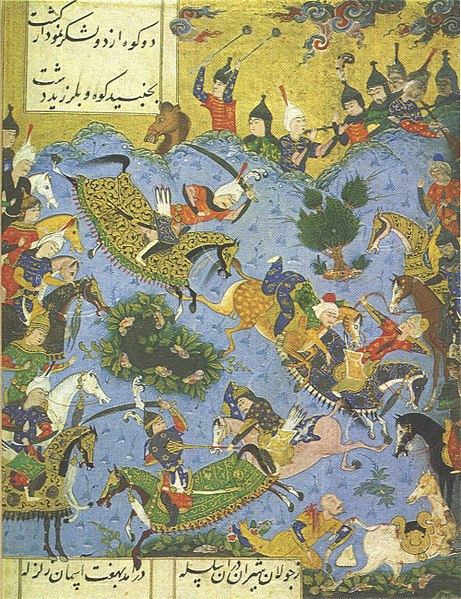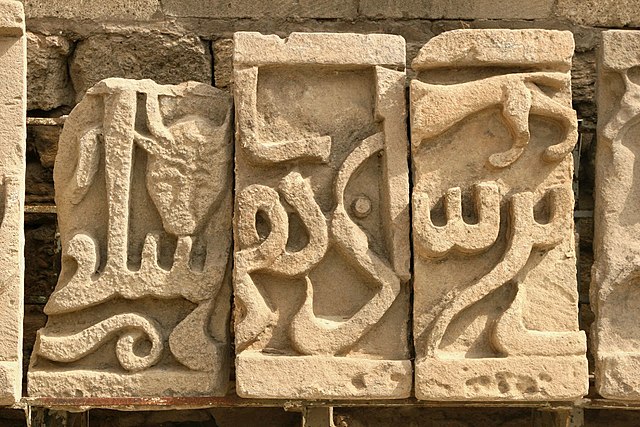Gobustan State Historical and Cultural Reserve
Gobustan State Historical and Cultural Reserve is located west of the settlement of Gobustan, about 40 miles (64 km) southwest of the center of Baku. It was established in 1966, when the area was declared a national historical landmark of Azerbaijan in an attempt to preserve the prehistoric rock carvings, mud volcanoes and musical stones in the region.
Entrance to the Gobustan Rock Art Cultural Landscape Reserve
Roman rock inscription "Legio XII Fulminata", carved between 84 and 96 A.D.
Image: Gobustan Azerbaijan 01
Image: Stone Age rock carvings in Gobustan
Baku is the capital and largest city of Azerbaijan, as well as the largest city on the Caspian Sea and in the Caucasus region. Baku is 28 metres (92 ft) below sea level, which makes it the lowest lying national capital in the world and also the largest city in the world below sea level. Baku lies on the southern shore of the Absheron Peninsula, on the Bay of Baku. Baku's urban population was estimated at two million people as of 2009. Baku is the primate city of Azerbaijan—it is the sole metropolis in the country, and about 25% of all inhabitants of the country live in Baku's metropolitan area.
Shirvanshah's Palace; Old City; Maiden Tower; Palace of Happiness; evening in Baku; Ismailiyya Palace; Heydar Aliyev Center; National Art Museum of Azerbaijan; Azerbaijan Carpet Museum; Azerbaijan State Academic Philharmonic Hall; Azerbaijan State Academic Opera and Ballet Theatre; Nizami Cinema Center; Ateshgah; Church of the Saviour; Heydar Mosque; view over city and Bay of Baku
Roman stone inscription in Gobustan dating back to AD 84–96
A miniature painting marking the downfall of the Shirvanshahs at the hands of the Safavids
Relics from the sunken Sabayil Castle







